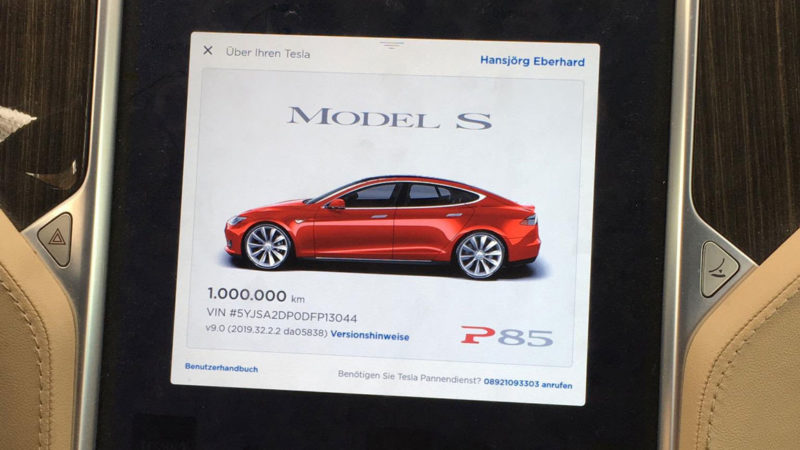Tesla Model S busts EV myths with historic 1 million kilometres driven

Gemmingen is, by his own account, not just an electric vehicle enthusiast: he wants to bust electric vehicle myths, such as the claim that they are not built to last or cannot cover vast distances.
“There is so much bashing, which I want to counteract,” the self-funded Gemmingen said to German automobile news site Automobile Woch.
And bust myths he has now done, crossing the 1 million kilometre mark under the watchful eyes of a representative from the Guinness Book of Records to ascertain if the milestone moment does in fact constitute a first by one electric vehicle.
On average, Gemmingen has driven around 600km a day over the 5 year period from when he acquired the Model S, which was previously a demo car, in 2014 with 30,000km on the clock.What a journey! 1 Million electric km driven with my @Tesla Model S pic.twitter.com/JHSIhGfEbl— Hansjörg Gemmingen (@gem8mingen) November 28, 2019
It has been the fourth motor that has held up to the pressure of what at times has been 1,000 kilometre drives for days at a time, covering 680,000km – more than two-thirds of the total 1 million kilometres.
It’s second battery – for which Gemmingen says in a Youtube video prior to the historic moment (shared below) he had to wait six months, driving with a loan battery until Tesla could replace it with a replacement battery – has covered half of the distance at 500,000km, Gemmingen says.
While not quite a third of the distance that Tesla CEO and co-founder Elon Musk says its new battery technology (that it intends to put into production in 2020) will be able to handle, it is still impressive.
But neither did Gemmingen’s incredible feat break the bank. As one of the original Model S vehicles it is still valid for free Supercharging, and at home Gemmingen charges using energy generated by rooftop solar panels on his home.
“You do not have to be a millionaire to afford it,” he said in an interview with German Manager Magazin which covered details of his drive.

The longevity of the battery (which we note Gemmingen tells Manager Magazin was replaced under warranty at 290,000km) he attributes to meticulously keeping the battery’s state of charge between 20-80% except in the case of a long trip where he would charge it up to 90%.
“If you drop below 20 percent charge level, the first cells can come under low voltage with cold battery, and that reduces the life,” he was quoted as saying.
Gemmingen is also a stickler for using DC rapid charging only when necessary, further ensuring the eco-friendliness of his driving.
“Ecologically, it is nonsensical early in the evening to draw a lot of electricity, better in the middle of the night when the power consumption of people is the lowest,” he was quoted as saying.

Bridie Schmidt is lead reporter for The Driven, sister site of Renew Economy.
She specialises in writing about new technology, and has a keen
interest in the role that zero emissions transport has to play in
sustainability.
No comments:
Post a Comment